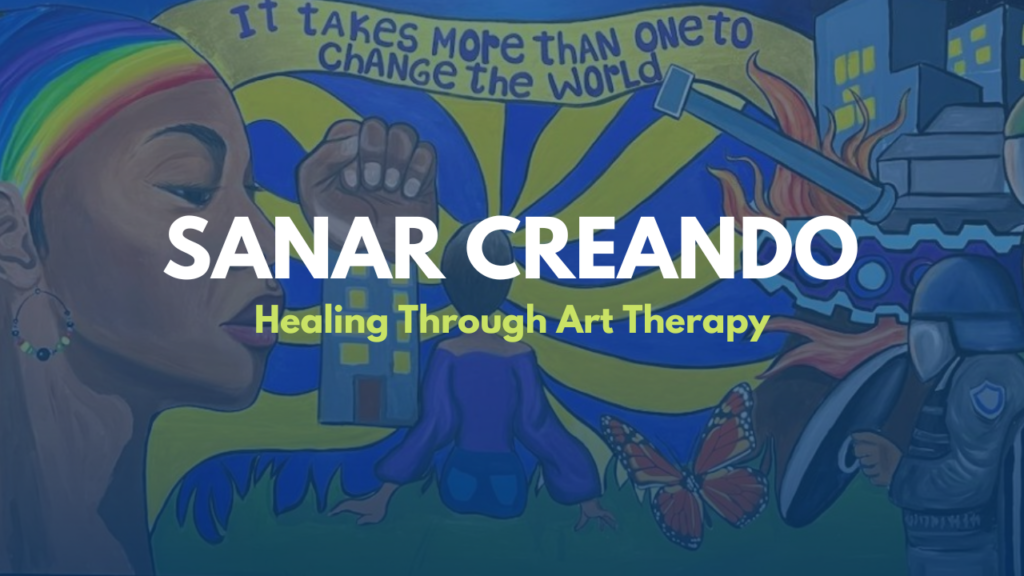
Executive Summary
Anchored in the pillars of the therapeutic effects of art activities and the muralist tradition in Latin American culture, the project Sanar Creando (Healing Through Art) was designed to use culturally inclusive expressive art therapeutic activities as a tool to assist students in processing and decreasing the impact of the traumatic events of the last few years in Minneapolis, increase students’ sense of belonging and invite them to participate as artists and storytellers in their community.
The initiative was a four-way collaborative partnership between HACER (Hispanic Advocacy and Community Engagement through Research) – design, management and evaluation, Aurora Charter School (host and logistics), Gustavo Lira Garcia (muralist artist), and Alder Graduate School in Mental Health (art therapy support). This work was funded by the Minnesota Humanities Center with a grant from the Arts and Cultural Heritage Fund.
Sanar Creando (Healing Through Art) was hosted by Aurora (Elementary and Middle) Charter School in Minneapolis, located in Lake Street along the corridor that was most affected by the 2020 riots that followed the killing of George Floyd. Aurora school serves a population 100% Latino of low and middle-income families, mostly first-generation and some second-generation immigrants. The proximity and the intensity of the events, layered on top of the pandemic-mandated lockdown, had a disproportionate impact on Aurora families.
Through guided conversations and art therapeutic activities – focused on cultural identity, impact of the events of the last few years, color exploration on early drafts and hope for the future – students expressed their feelings and the impact that the events of the last few years had in their lives. Children also explored the concept of identity as a tool to increase self-esteem and improve their mental health. These practices allowed them to find paths to explore and express their thoughts and feelings -individually and collectively- and ultimately elevate their sense of self-efficacy.
Evaluation data collection methods that yielded the richest data were conversations with the students in class, team observations and debriefs, and the artist statements. Additionally, we held conversations with school staff, gathering their observations, as well as a small number of conversations with parents.
The murals are the most tangible product of the project, yet the most valuable outcome is delivered to the community that participated in its creation.
HACER aims for the learnings from this project to be used to create similar projects in other schools and learning environments, where underrepresented communities can use this art therapy model to strengthen their voices, process their feelings in non-verbal ways and engage others in conversations.
